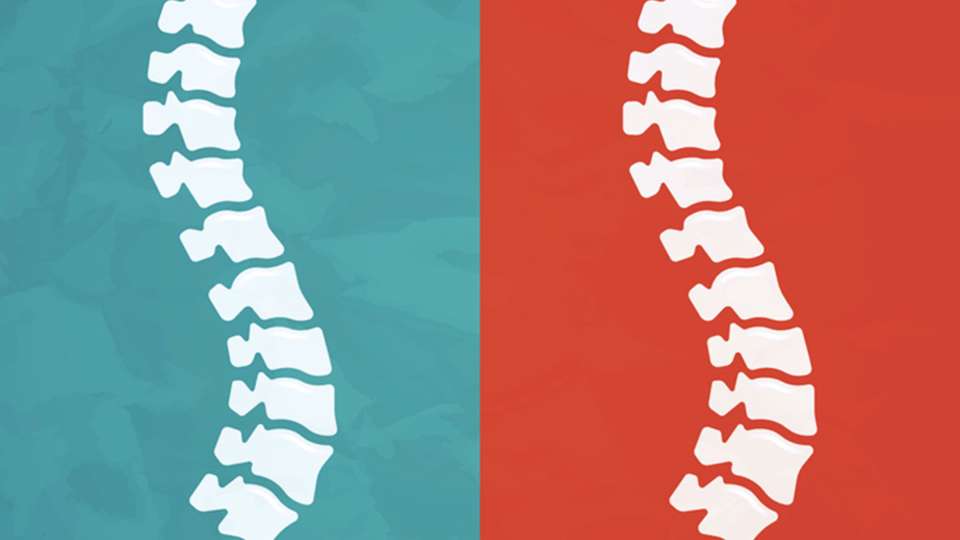
Worried that slumping over your keyboard every day is seriously damaging your spine, your posture, your health? We know the feeling. This is why we’ve asked the experts, who have your back for a living, how they keep everything in tip-top shape when it comes to their own bodies.
Luckily, we have a whole smorgasbord of spine specialists on deck who are passionate about their work and happy to share their tips and tricks. Read on to learn a thing or two (or ten) from these insightful UW Medicine spine doctors, physical therapists and experts — who, besides from being deeply knowledgeable, also love what they do.
How do spine experts keep their own bodies healthy?
When asked how they keep their own spines healthy, most of our experts approached the question in a well-rounded way, emphasizing how not just one, but many things can affect the health of your spine.
Dr. Joe Ihm, a physician at the Spine Center at Harborview, admits to slouching sometimes — but does his best to optimize his posture throughout the day (am I the only one who just sat up a little straighter?). He also makes sure to do aerobic and resistance exercises regularly and take short walks throughout the day.
Sports medicine physician, Dr. Omar Bhatti, focuses on not being too sedentary — which is something that ALL of the experts agree with doing.
“I try to incorporate healthy spine habits in the workplace. I avoid sitting for long periods of time and I have a sit-to-stand desk. I make sure I walk around the clinic as much as possible during the workday,” he says.
He emphasizes how just small changes — like taking a few minutes to stretch and take a quick stroll — can make a world of difference when it comes to spine health.
Dr. Neelwant Sandhu says that exercise is also key — though that can look different for each individual.
“One of the most helpful ways to keep the spine and back healthy is to engage in some form of regular exercise. For me, this includes aiming for at least 150 minutes each week of moderate level cardio, and two times each week of strength training,” he says.
What are the things spine experts would never do?
For Dr. Eric Chen the answer is clear — skydiving.
Other experts are less specific, but Bhatti and Johnson agree that they would never sit all day. And when it comes to exercising, Bhatti also says, “Listen to your body. If an exercise or activity consistently causes you discomfort, then it may be best to avoid or at least modify it. Ease into any new activities and dedicate time to a core strengthening program.”
Another good tip from Chris Glatz, physical therapist at Advanced Manual Therapy & Sports Rehabilitation at Ballard: don’t rotate and lift.
“Always face what you are lifting and use your feet, not your back, to move,” says Glatz. “Also, avoid lifting more than you can safely and that includes around the home as well as at the gym.”
What are their favorite spine-friendly activities?
When it comes to his own health, Ihm counts walking as his favorite spine-friendly activity, while spine expert Dr. Stephen Johnson prefers resistance training and basketball as a way of moving his body.
Bhatti takes it a step further, saying, “Paddle boarding — even in Seattle winters — is a fun way to keep your spine healthy.”
And for those of you not as inclined to throw yourself onto an object precariously floating in icy cold waters? The experts also agree that yoga can be a rewarding way to work on several different core muscle groups — in the comfort (and warmth) of your own home.
Spine facts for the road
And let’s not forget about interesting spine facts. We had a couple of strong contenders, including Sandhu’s point that though the term “spine degeneration” can sound horrifying, it’s a normal part of the aging process, and only some types of degeneration will actually cause pain.
But our top fascinating fact? According to Glatz, human and giraffe necks are more alike than we think.
“Giraffes have the same number of cervical vertebrae as humans — seven. Most mammals including whales and dolphins have seven except for manatees and a couple of species of sloths,” Glatz says.

 Healthy ideas for your inbox
Healthy ideas for your inbox





